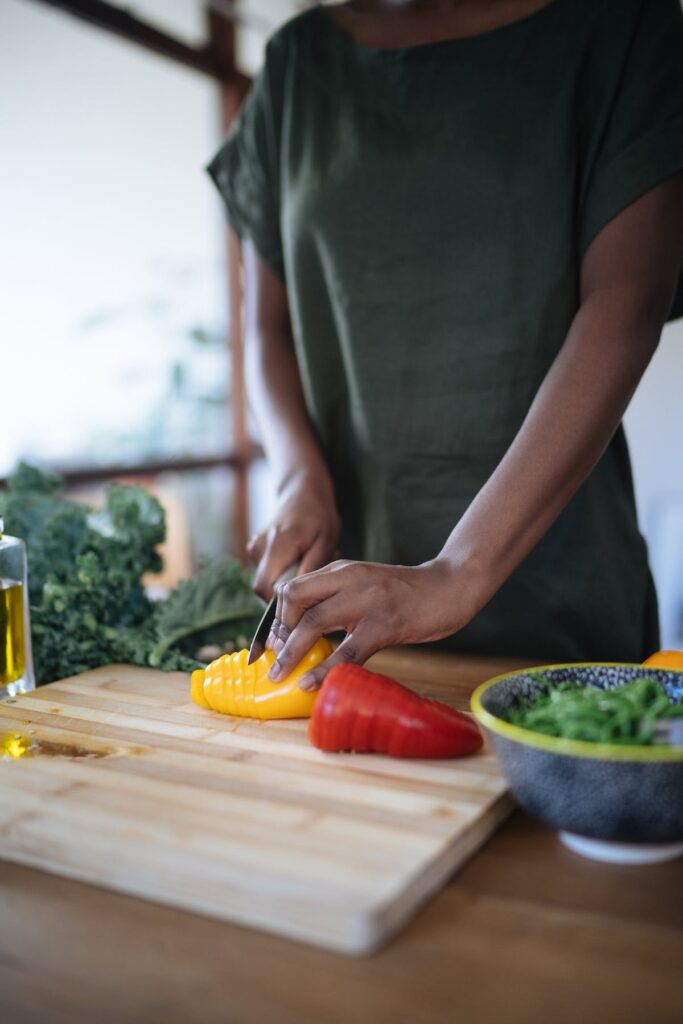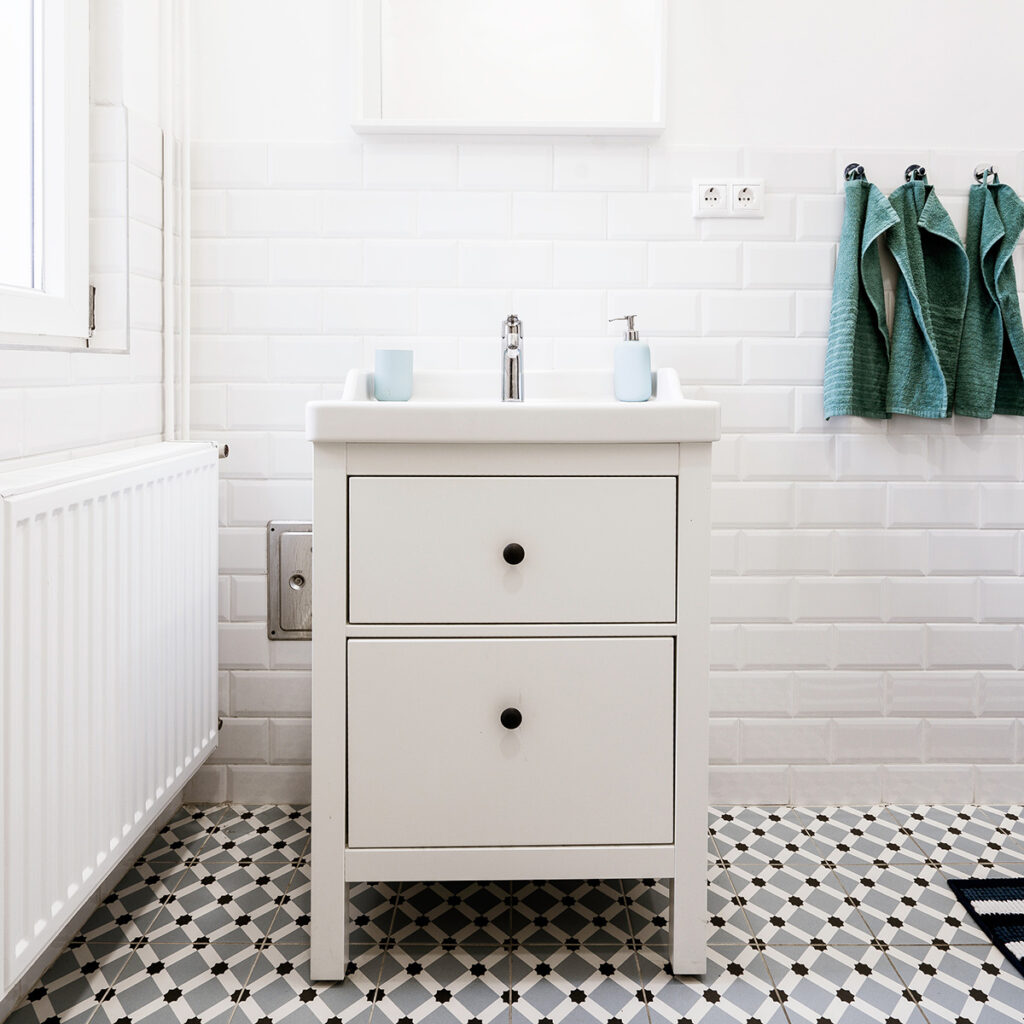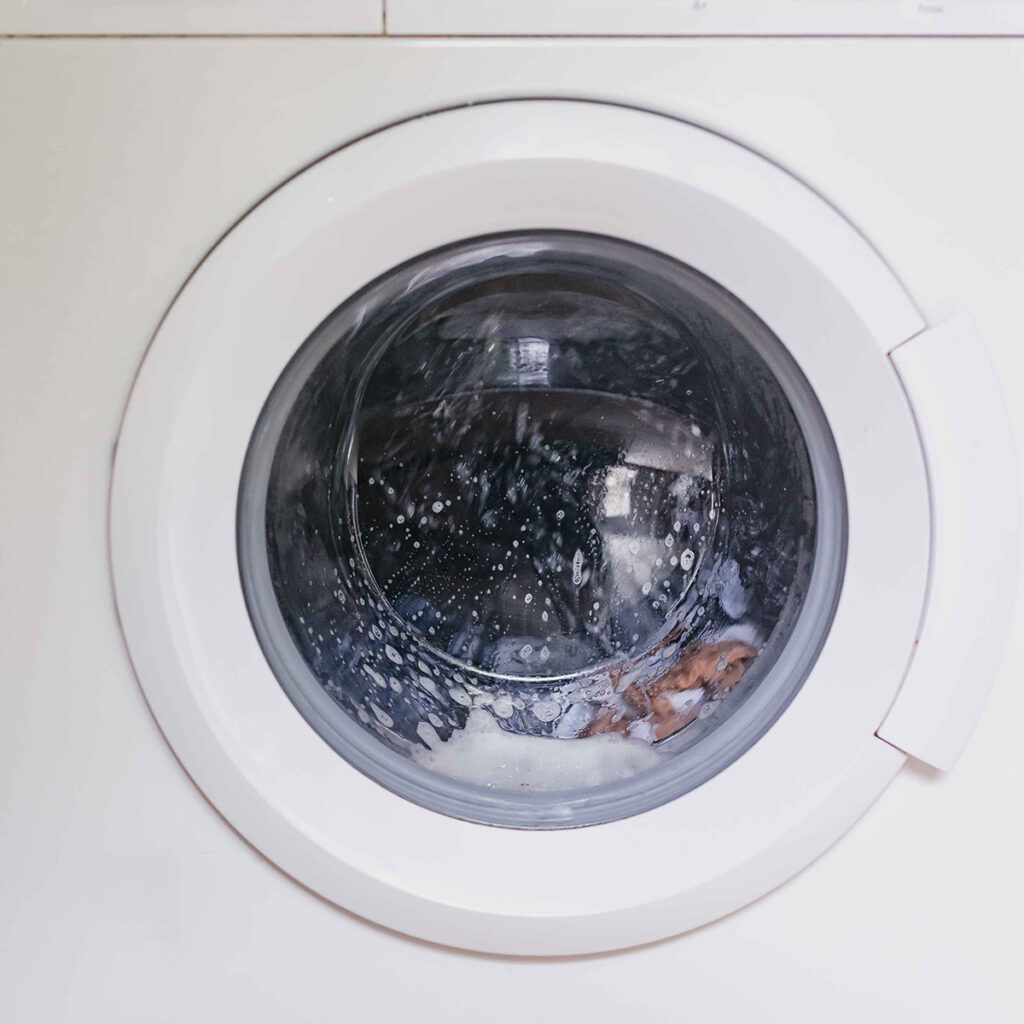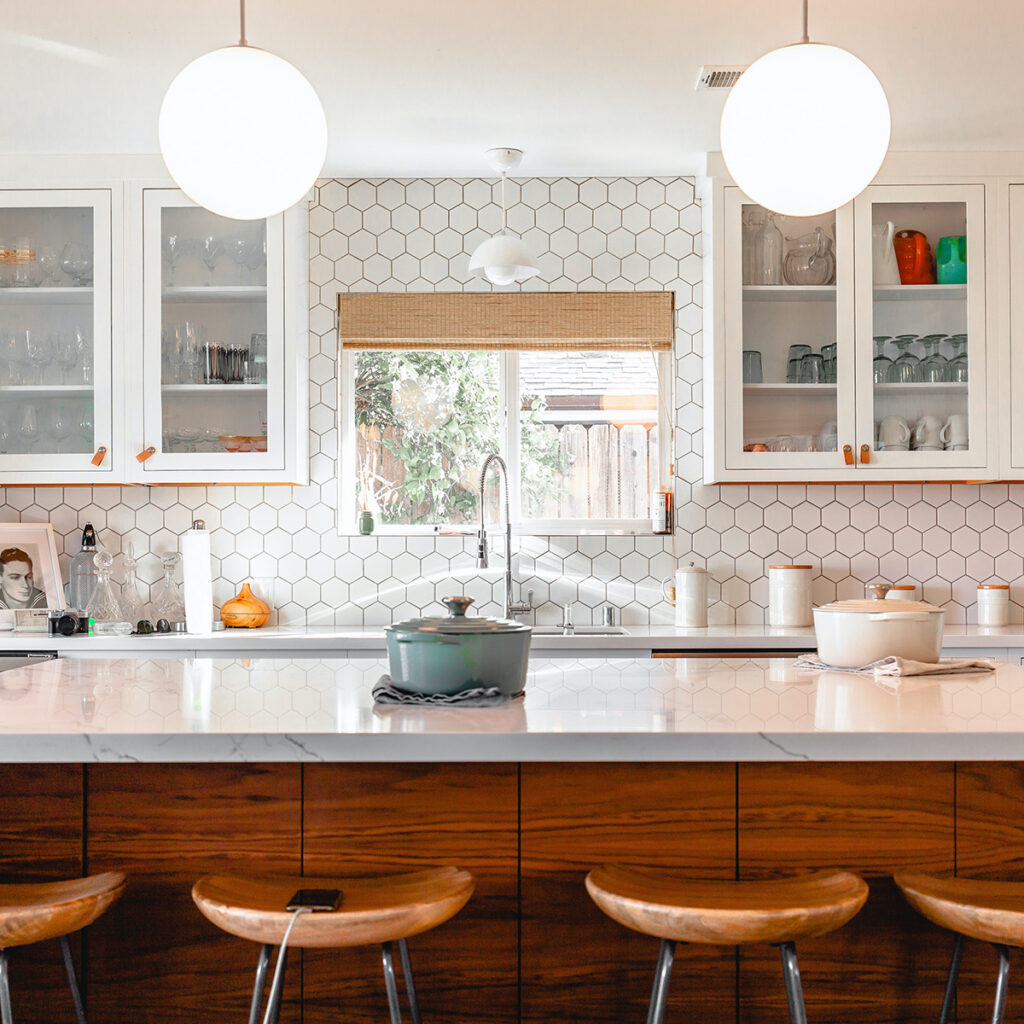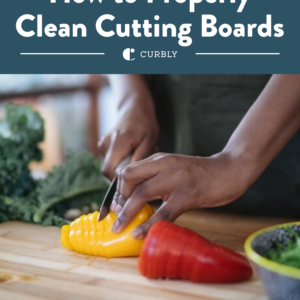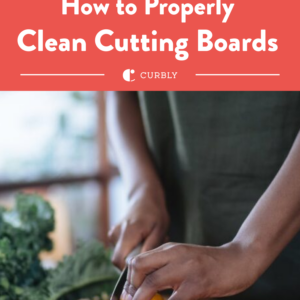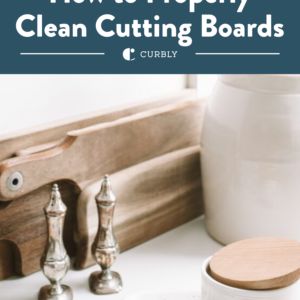Raise your hand if you’re a passionate home cook who loves to chop, slice, and dice on a wood cutting board! If that’s you, it’s important to know how to properly clean and maintain this kitchen staple. A well-cared-for wood cutting board not only looks beautiful but will last for years to come.
This ultimate guide will walk you through the step-by-step process of cleaning and maintaining your wood cutting board. From removing tough stains to preventing unpleasant smells, you’ll learn all the tips you need to keep your cutting board in tip-top shape so that it will be ready to go the next time you hit the kitchen.
Let’s dive in!
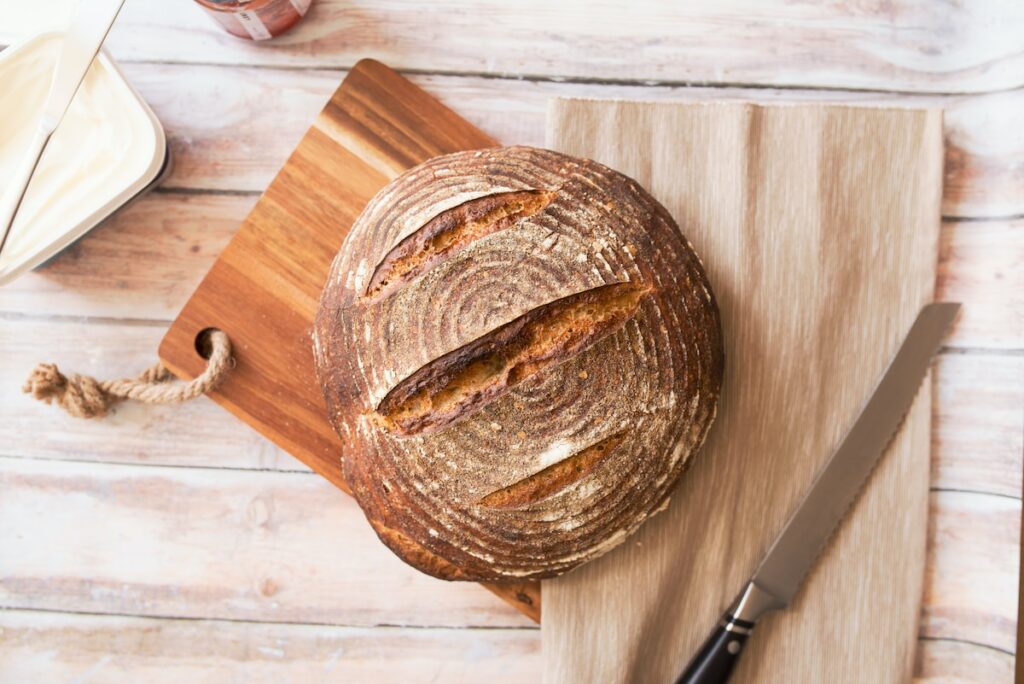
Why use wood cutting boards?
Wooden cutting boards are a favorite of home cooks for several reasons:
- Durability: Wood is sturdy and resilient, making it a reliable surface for chopping and slicing.
- Knife-Friendly: Wooden boards are gentle on knife blades, reducing dullness and maintaining sharpness.
- Natural Antibacterial Properties: Certain woods, like maple and walnut, possess natural antimicrobial qualities that inhibit bacterial growth.
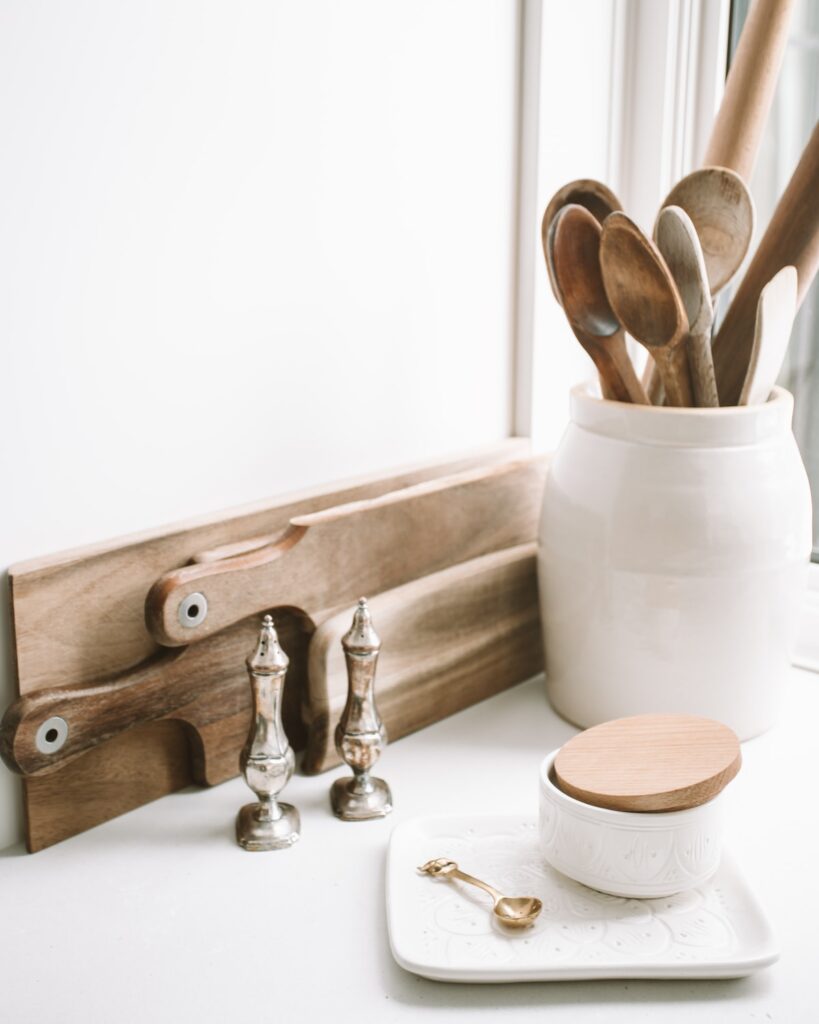
Mistakes to avoid with your wood cutting board

When it comes to cleaning and caring for your wood cutting board, there are some common mistakes that you should be aware of. Avoiding these pitfalls will help keep your cutting board in excellent condition and prevent any potential damage.
First and foremost, never soak your wood cutting board in water for an extended period. Wood is porous and can absorb water, leading to warping, cracking, and mold, mildew, or bacteria growth. Instead, opt for a quick and thorough cleaning and rinsing process that doesn’t involve excessive moisture.
Another mistake to avoid is using harsh chemicals (like liquid chlorine bleach) or abrasive cleaners on your wood cutting board. These can strip away the natural oils and damage the wood surface. Stick to gentle, natural cleaning solutions like dish soap, baking soda, and food-grade mineral oil that won’t harm your cutting board or compromise its integrity.
The Ultimate Guide to Properly Clean and Maintain Your Wood Cutting Board
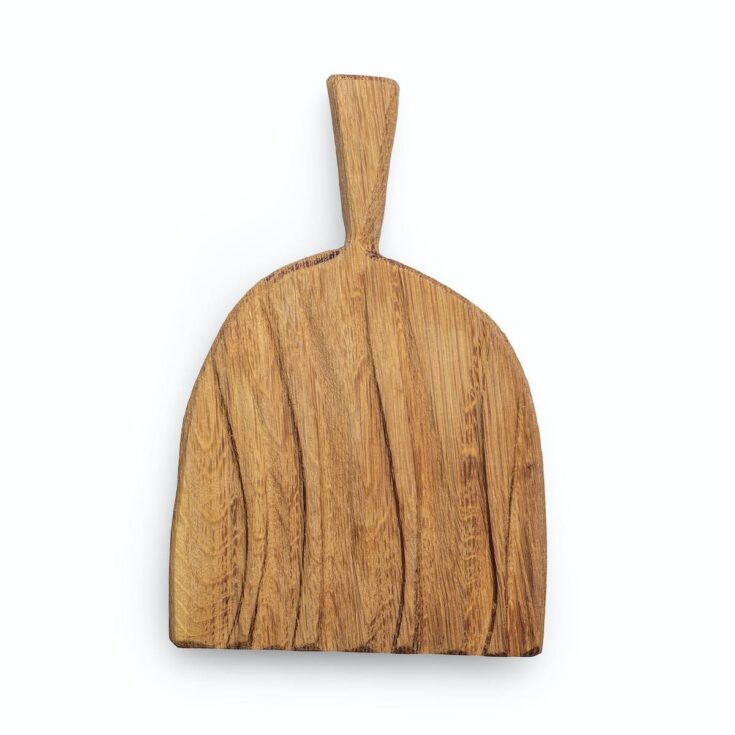
Cleaning your wood cutting board doesn't need to be complicated. By following these simple steps, you'll ensure that your cutting board will be ready to take on any amount of chopping, slicing, and dicing.
Materials
- Dish soap
- Salt
- Lemon
- Baking soda
- Hydrogen peroxide
- Food-grade mineral oil or beeswax
Tools
- Bench scraper
- Metal spatula
- Soft sponge
- Soft cloth
- Paper towels
Instructions
- Start by scraping off any food debris or residue from the cutting board's surface using a bench scraper or a metal spatula. Use gentle motions to avoid scratching the wood.
- Next, wash the cutting board with warm, soapy water. Use a mild dish soap and a soft sponge or cloth to scrub the surface gently. Clean both sides of the board and pay extra attention to areas with visible stains or buildup.
- To remove light stains, sprinkle some coarse salt onto the stained area and rub it gently with a lemon half or a sponge dampened with lemon juice. The acidity of the lemon combined with the abrasive salt can help lift the stain.
- For more stubborn stains, create a paste by mixing baking soda and hydrogen peroxide until it forms a thick consistency. Apply the paste to the stained area and let it sit for a few minutes before scrubbing gently with a sponge or cloth.
- If the stain persists, use fine-grit sandpaper to sand away the stain gently. Start with a light touch and gradually increase the pressure if necessary. Remember to file in the direction of the grain to avoid damaging the wood.
- Rinse the cutting board thoroughly with hot water to remove any soap/baking soda residue. Make sure to wash both sides of the board, even if you only used one side, to prevent it from drying unevenly which can lead to warping or cracking.
- Finally, pat dry the cutting board with a clean towel or let it air dry in an upright position. Avoid leaving it flat on the countertop, which can trap moisture and promote bacterial growth.
- Once or twice a month, you'll want to season and oil your cutting board. After the cutting board is clean and completely dry, apply a thin, even layer of oil (i.e. mineral oil or beeswax) to the entire surface using a clean cloth or paper towel. Rub the oil into the wood in the direction of the grain to allow it to absorb more easily.
- Let the oil sit on the cutting board for a few hours or overnight, allowing it to penetrate the wood fibers. Afterward, wipe off excess oil with a clean cloth or paper towel.
Notes
Remember to clean your wood cutting board after each use to prevent the accumulation of bacteria and food residue. If you only use the board to cut bread, you can wipe away the crumbs with a dry towel.
Things to avoid
- Avoid Harsh Cleaners: Chemicals and abrasive cleaners can damage the board’s surface and compromise its integrity.
- Avoid High Temperatures: Refrain from exposing your wooden board to extreme heat or direct sunlight, which can cause drying and cracking of the cutting board surface. This includes dishwashers.
- Avoid Certain Foods: Acidic foods like lemons, beets, or tomatoes can leave stubborn stains and impart odors on the wood; try to wipe these off quickly after use.
Your wood cutting board is more than just a kitchen tool; it’s an investment. With regular care and maintenance, it can remain a reliable and trusty companion in your culinary adventures for years to come.
